Blocked ducts
Herzl Family Practice Centre, Goldfarb Breastfeeding Clinic Patient handout
What is a blocked duct?
When a milk duct is clogged so that milk can’t flow freely, causing a lump or thread of firm area in the breast it is called a blocked duct. The exact cause is unknown.
- Blocked ducts are tender and painful lumpy areas in the breast
- The skin around the lumpy area may be red and warm to touch.
- Your breast may feel firm or swollen in that area.
- You generally feel well.
- You usually do not have a fever or if you do it is mild (i.e. less than 38.4° C or 101° F)
- You may notice a sometimes painful small white dot on your nipple (milk bleb).
Risk factors for blocked ducts:
You may be more at risk of having blocked ducts if:
- Your breasts are not drained well, such as with a poor latch.
- You have irregular, shorter or skipped feeds.
- You have any pressure on the breasts such as with a tight bra, back-pack/purse or tight seat-belt.
What to do for blocked ducts:
- Continue nursing your baby often day and night, and try the following
- Ensure baby is nursing in a good position and latches well. You should not feel any pain.
- Change nursing positions to sometimes have baby’s nose or chin pointing towards the blockage.
- Try nursing while leaning over your baby (on all fours) so that gravity can help dislodge the blocked duct.
- Massage the lump while the baby is suckling.
- Wear comfortable clothes and make sure your bra is not too tight.
- Soak breasts in hot tap water and Epsom Salts:
- Fill sink or large bowl with 4 litres of hot water.
- Add a handful (2 tablespoons or 30 ml) of Epsom Salts.
- Submerge breasts for about 10 minutes before each feed for 24 hours.
- You can massage the blocked area towards the nipple while it is soaking (starting closer to the nipple and moving up the breast).
- Rinse with fresh water before nursing, as baby may not like the salty taste.
- Nurse baby soon after soaking.
**If you don’t have time to submerge your breasts before each feed, then you can sit in a hot bath with a cup of Epsom Salts for about 10 – 20 minutes, rinse off, then nurse your baby.
- You may want to limit your fats (deep fried foods, potato chips, etc) and add lecithin to your diet:
- 1 tablespoon/day of lecithin or 1 lecithin capsule (1200 mg) 3-4 times per day may be helpful to decrease blocked ducts.
- If you have repetitive blocked ducts, we sometimes suggest ultrasound therapy or lymphatic drainage.
Generally when the blockage is gone and milk is flowing all the symptoms go away. Blocked ducts can last a couple of days and should improve with treatment.
If you do not feel better in 2 -3 days or if symptoms worsen, contact your health professional.
The information contained in this patient handout is a suggestion only, and is not a substitute for consultation with a health professional or lactation specialist. This handout is the property of the author(s) and the Goldfarb Breastfeeding Clinic. No part of this handout can be changed or modified without permission from the author and the Goldfarb Breastfeeding Clinic. This handout may be copied and distributed without further permission on the condition that it is not used in any context in which the International Code for the Marketing of Breastmilk Substitutes is violated. For more information, please contact the Goldfarb Breastfeeding Clinic, Herzl Family Practice Centre, SMBD Jewish General Hospital, Montreal, Quebec, Canada. © 2009
